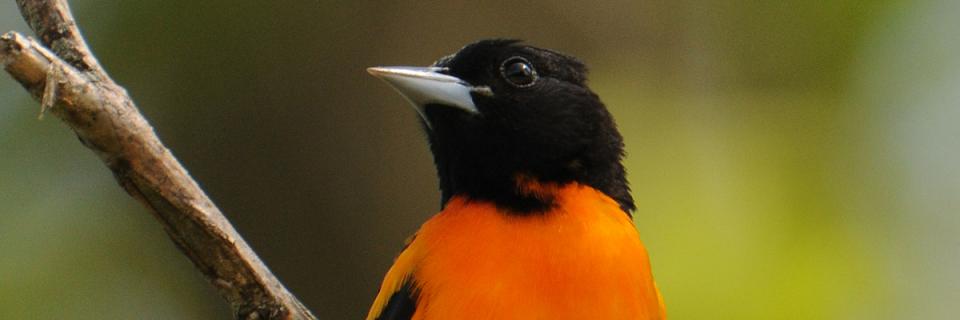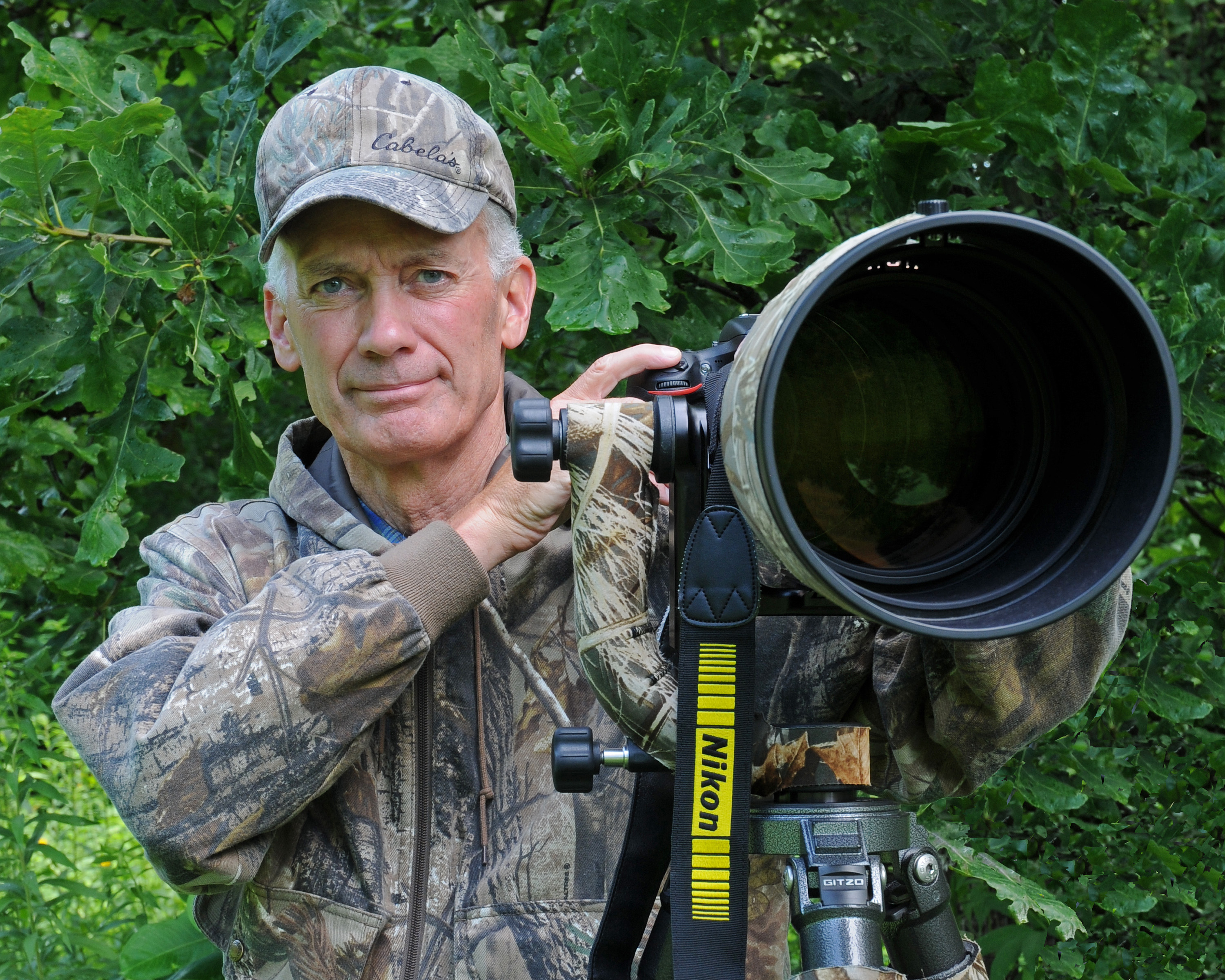Though Ken Saunders II numbers hiking and nature study among his primary interests, nature photography is his passion. Photography, in his mind, dovetails with all his other interests. Saunders got his first camera, a Kodak 104 Instamatic, when he was around seven years old. This camera used a 126 film cartridge and featured a connector for the new (at the time) flashcube. The 104 retailed for $15.95 when launched in 1963. Kodak sold 60 million of the various models of “Instamatic” cameras in the 1960’s and 1970’s. Back then, Saunders enjoyed taking snapshots of family, friends, and travel destinations during those early days.
Finally in 1985, he purchased his first (and only) 35mm film SLR (single lens reflex) camera—a Pentax Super Program, plus several Pentax lens. Saunders started focusing on nature (flora and fauna), scenery, and some macro photography consisting mostly of flora. He did majority of his photography during this time on trips to various national parks. Initially Saunders used print film, but transitioned later to slide film.
Saunders began his digital experience in 2003 with a Nikon Coolpix 5700, a high end digital camera that was not a SLR. The fixed lens in the body gave him the equivalent of a 35-280mm zoom. Saunders also purchased a Nikon adaptor, a Nikon 28mm wide angle converter, and a Nikon 1.5x telephoto converter. He continued to focus on nature photography, including macro photography. With the adapter and the 1.5x teleconverter installed, the equivalent focal length became 52.5-420mm. This improved his ability to capture wildlife and, as he puts it, he “quickly became addicted to the longer focal length!”
In 2006 Saunders purchased his first DSLR (digital single lens reflex)—a Nikon D200 and several Nikkor (Nikon) lens. He claims that the learning curve changed dramatically for him as he made use of his newest digital equipment technology, which had the added benefit of eliminating the purchase and loading of the film. With this new suite of equipment, Saunders was willing to branch out, trying multiple settings and taking lots of shots. Since 2006, he has upgraded camera bodies several times, added a couple of lens, and obtained a set of teleconverters. As he puts it, “There is no going back!” While Saunders has spent considerable time over the years photographing nature in northwest Wyoming, the vast majority of his photography is captured in Iowa, and usually not too far from Grinnell. Saunders captures many of his bird photos within easy driving distance of his home base, Grinnell, Iowa.
Saunders hopes that his photography will further the cause of environmental education, perhaps stimulating those who are not familiar with the gifts of nature, or further stimulating those who already are. Saunders feel that if one becomes more intimate with nature, one is likely to realize these gifts, perhaps becoming passionate about them, and certainly becoming interested in not losing them. He feels his photography can bring attention to that in the natural world which is threatened, saying: “It would be difficult to feel loss if one is not aware of what they are losing."
Wood Duck
Aix sponsa
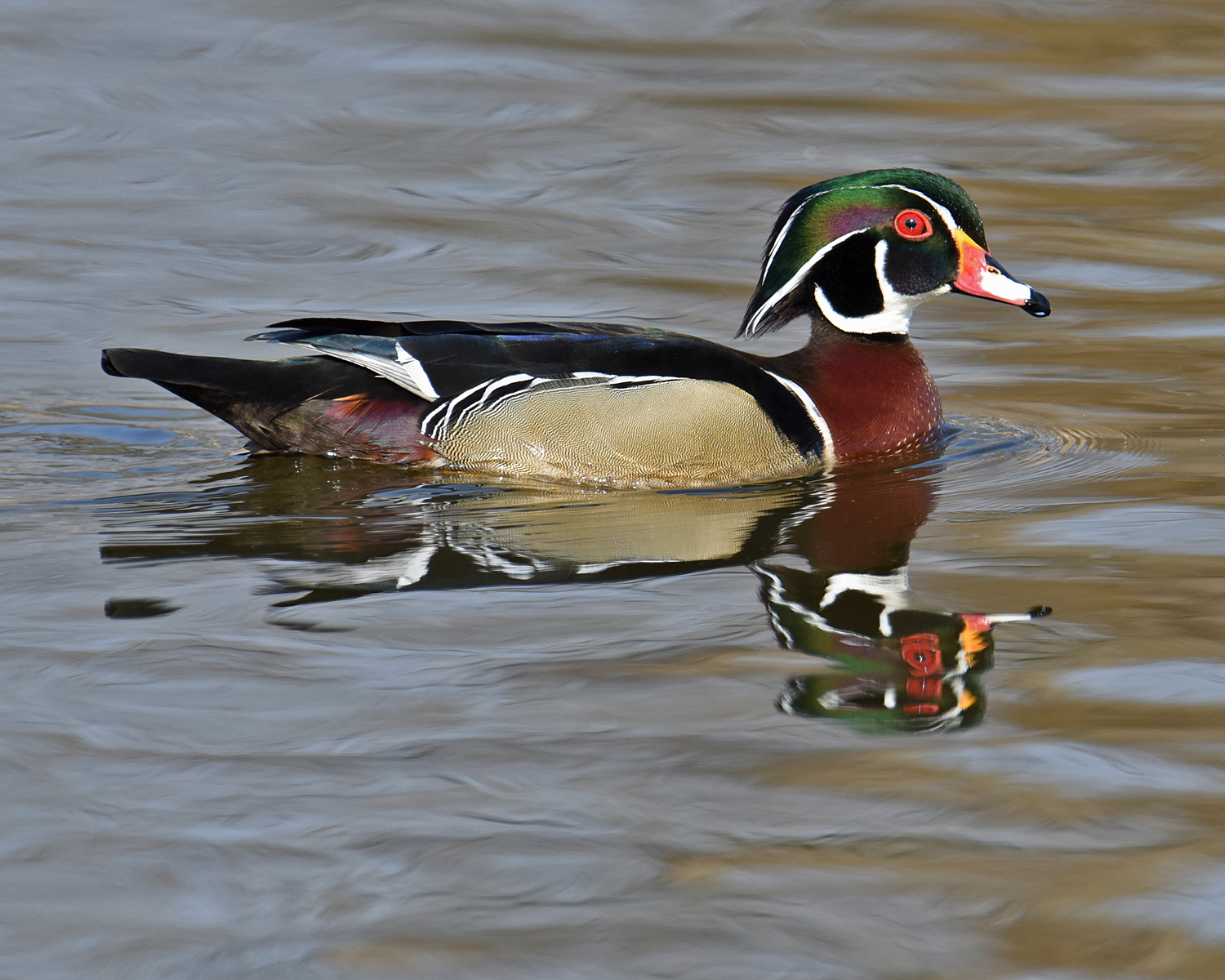
Photo courtesy of Ken Saunders II, taken April 12, 2017, at Otter Creek Marsh Wildlife Management Area in Tama County, Iowa
The Wood Duck is one of the most stunningly pretty of all waterfowl. Males are iridescent chestnut and green, with ornate patterns on nearly every feather; the elegant females have a distinctive profile and delicate white pattern around the eye. These birds live in wooded swamps, where they nest in holes in trees or in nest boxes put up around lake margins. They are one of the few duck species equipped with strong claws that can grip bark and perch on branches.
Song: Although better known for their distinctive coloration, Wood Duck calls are easily identifiable as well. Females make loud “oo-eek, oo-eek” sounds when disturbed and when taking flight. Male Wood Ducks have a thin, rising and falling zeeting whistle. While flying, the wings of the wood duck make a whistling or whirring sound (Description adapted from text created by the Cornell Lab of Ornithology).
**To hear an audio recording of the Wood Duck, captured by Paul Driver, visit Xeno-canto. **
Baltimore Oriole
Icterus galbula
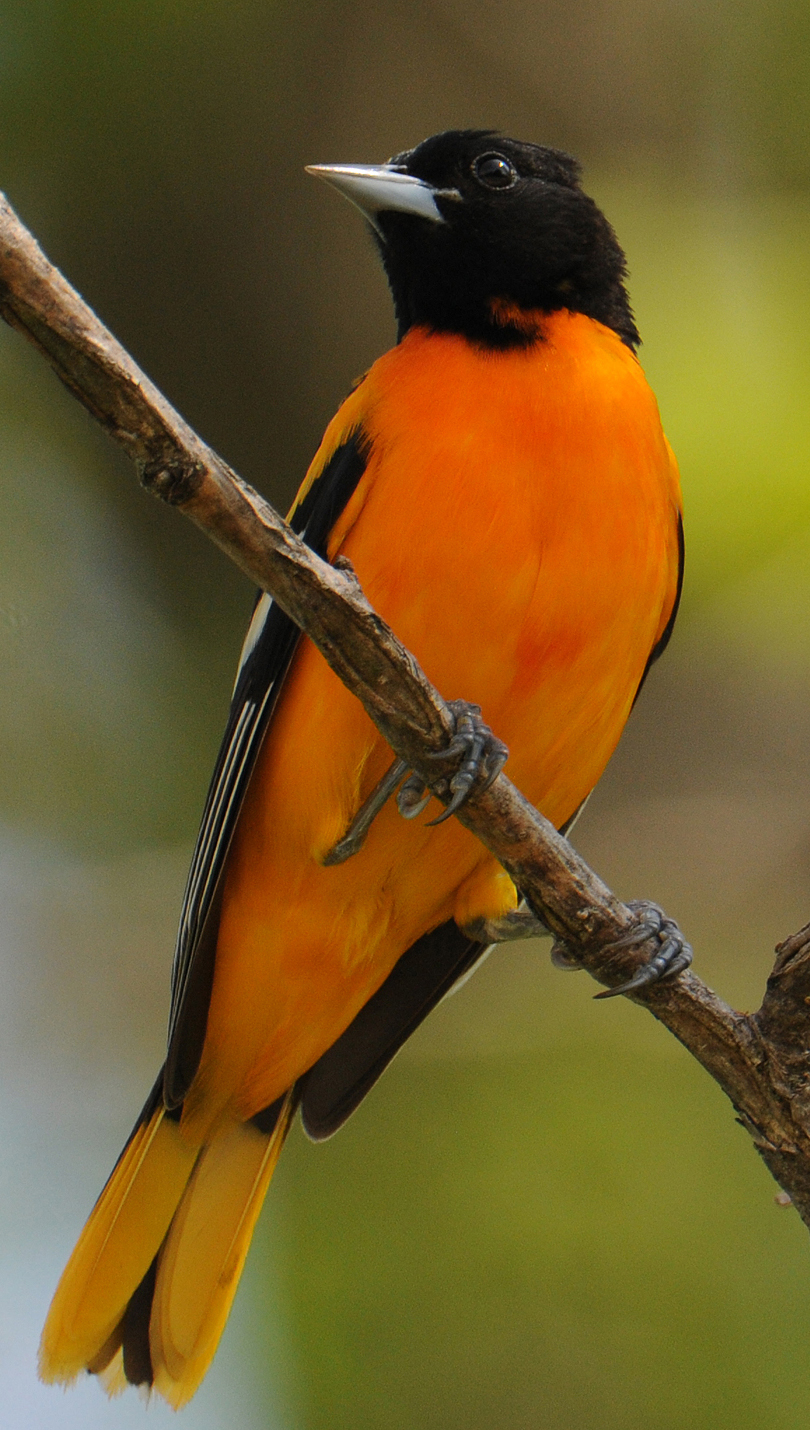
Photo courtesy of Ken Saunders II, taken May 19, 2013, at Arbor Lake City Park in Grinnell, Iowa
The rich, whistling song of the Baltimore Oriole, echoing from treetops near homes and parks, is a sweet herald of spring in Eastern North America. Look way up to find these singers: the male’s brilliant orange plumage blazes from high branches like a torch. Nearby, you might spot the female weaving her remarkable hanging nest from slender fibers. Fond of fruit and nectar as well as insects, Baltimore Orioles are easily lured to backyard feeders.
Song: The pure, liquid, whistling tones of the male Baltimore Oriole are a herald of springtime in eastern North America. His song consists of a short series of paired notes, repeated 2–7 times, lasting 1–2 seconds. The flutelike sound has a full, rich tone. The male sings to establish and defend a breeding territory, so you won’t hear the full song on the wintering grounds. The female Baltimore Oriole also sings. Her shorter songs may be communications with her mate. Occasionally, mated pairs may sing a duet. (Description adapted from text created by the Cornell Lab of Ornithology.)
**To hear an audio recording of the Baltimore Oriole, captured by Antonio Xeira, visit Xeno-canto. **
Common Loon
Gavia immer
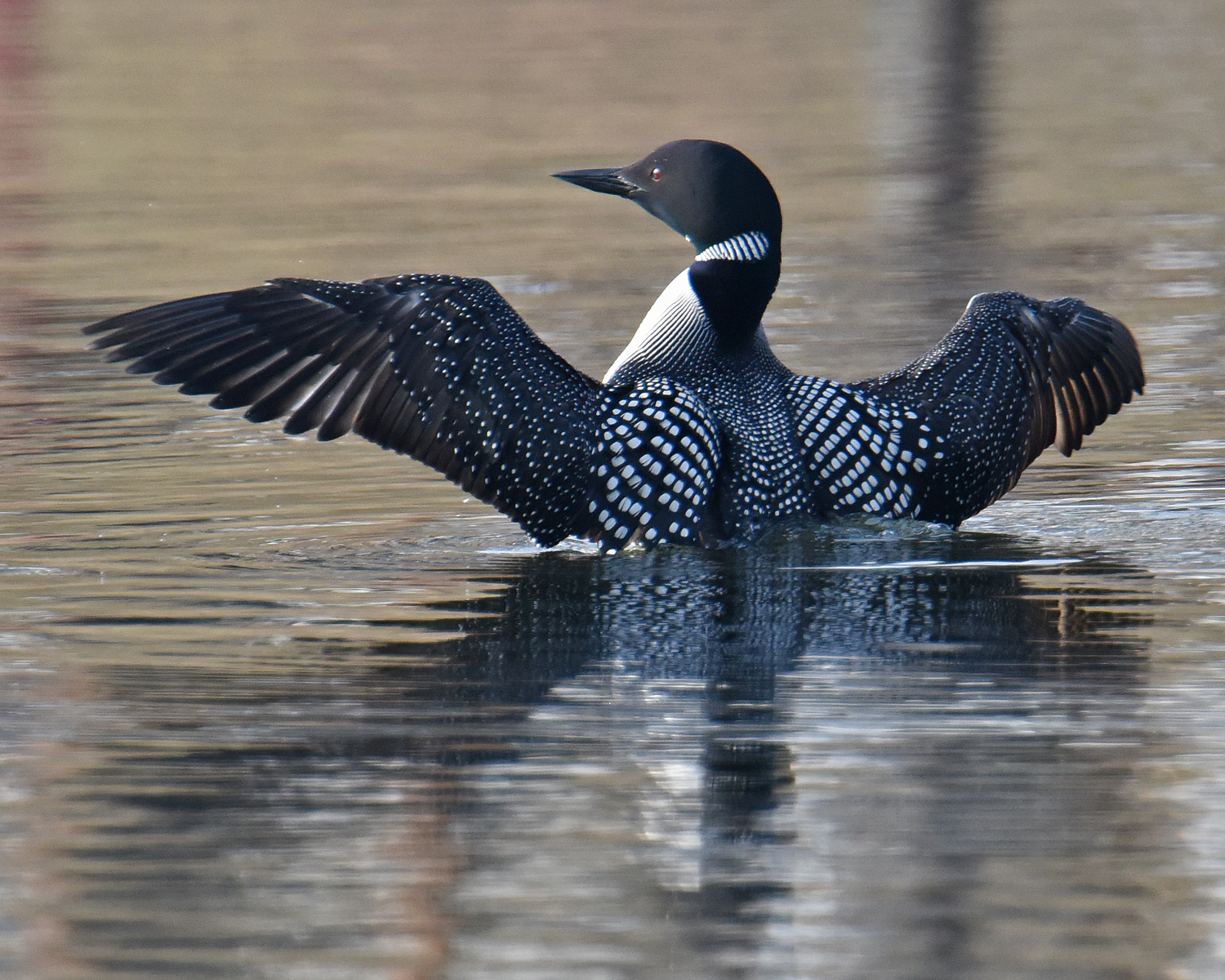
Photo courtesy of Ken Saunders II, taken April 11, 2018, at Lake Ponderosa, Iowa
The eerie calls of Common Loons echo across clear lakes of the northern wilderness. Summer adults are regally patterned in black and white. In winter, they are plain gray above and white below, and you’ll find them close to shore on most seacoasts and a good many inland reservoirs and lakes. Common Loons are powerful, agile divers that catch small fish in fast underwater chases. They are less suited to land, and typically come ashore only to nest. (Description courtesy of the Cornell Lab of Ornithology.)
Song: Common Loons are famous for their eerie, beautiful calls. Among these are the tremolo, a wavering call given when a loon is alarmed or to announce its presence at a lake. The yodel is the male loon’s territorial claim. Each male has his own signature yodel. If a male moves to a different territory, he will change his yodel. The wail is the haunting call that loons give back and forth to figure out each other’s location. Hoots are soft, short calls given to keep in contact with each other. Parents might hoot to a chick, or one mate might hoot to another. (Description adapted from text created by the Cornell Lab of Ornithology.)
**To hear an audio recording of the Common Loon, captured by Lance A. M. Benner, visit Xeno-canto. **
Hooded Merganaser
Lophodytes cucullatus
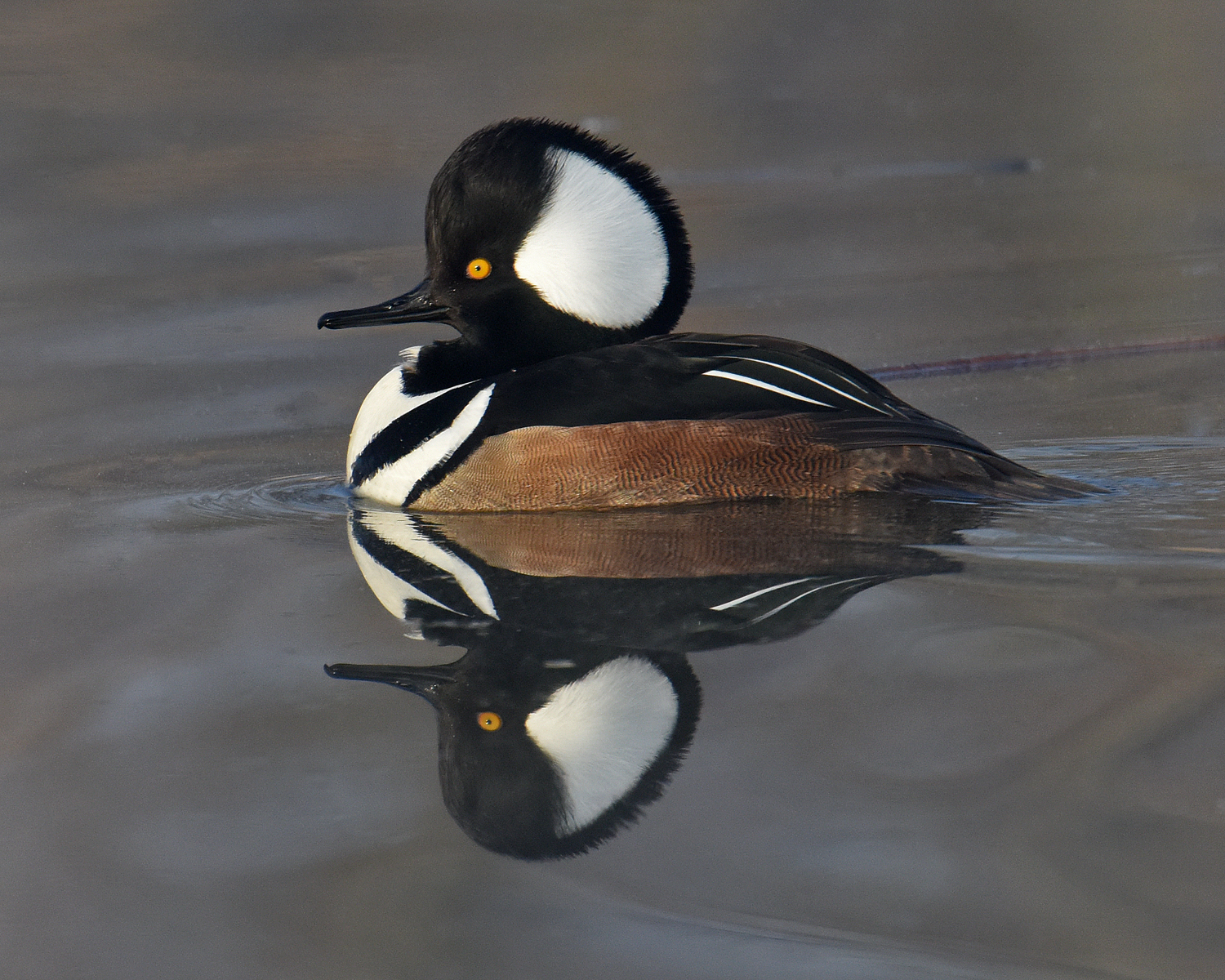
Photo courtesy of Ken Saunders II, taken February 19, 2017, at Otter Creek Marsh Wildlife Management Area in Tama County, Iowa
The “Hooded” Merganser is something of an understatement for this extravagantly crested little duck. Adult males are a sight to behold, with sharp black-and-white patterns set off by chestnut flanks. Females get their own distinctive elegance from their cinnamon crest. Hooded Mergansers are fairly common on small ponds and rivers, where they dive for fish, crayfish, and other food, seizing it in their thin, serrated bills. They nest in tree cavities; the ducklings depart with a bold leap to the forest floor when only one day old.
Song: Hooded Mergansers are usually silent, but they call during courtship and around nest sites. A courting male makes a deep, rolling sound like the call of a pickerel frog, earning it the nickname of “frog-duck” in Georgia. Females give a hoarse gack call during courtship. When females call in flight or to newly hatched ducklings, they use a rough croo-croo-crook similar to that of many sea ducks.
(Description adapted from text created by the Cornell Lab of Ornithology.)
**To hear an audio recording of the Hooded Merganser, captured by Jim Berry, visit Xeno-canto. **
